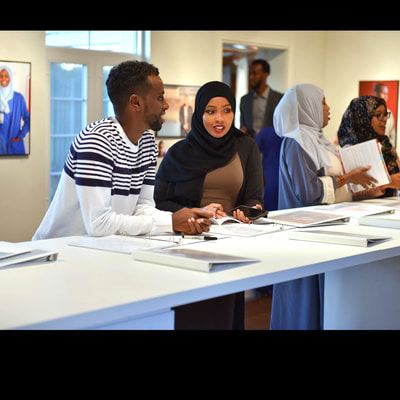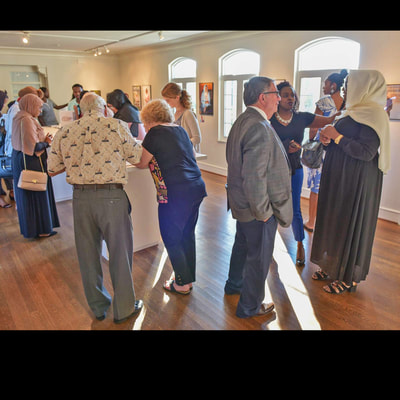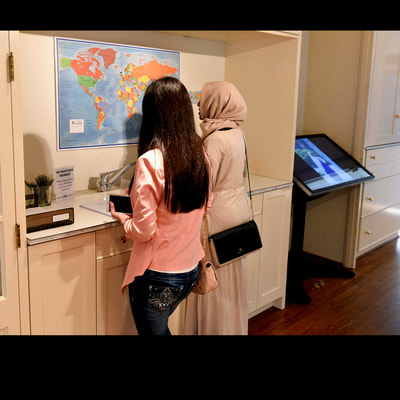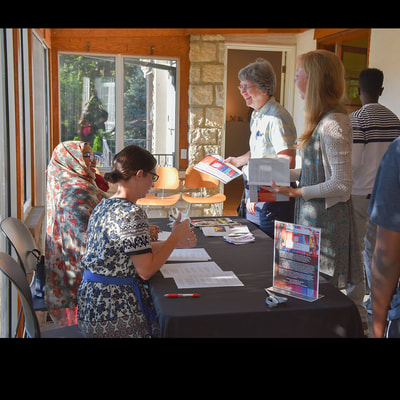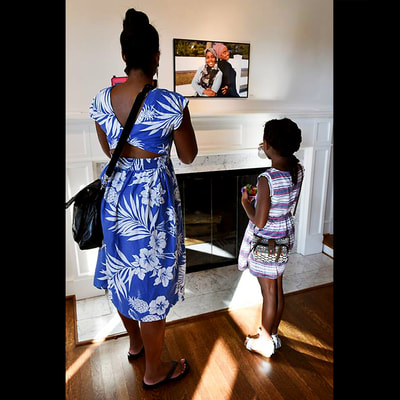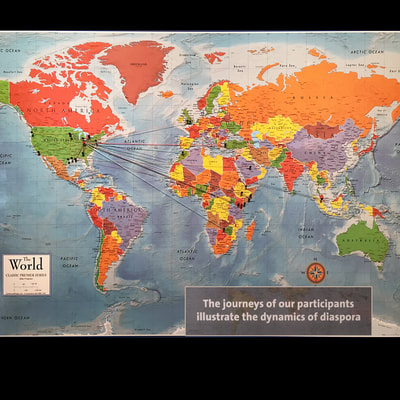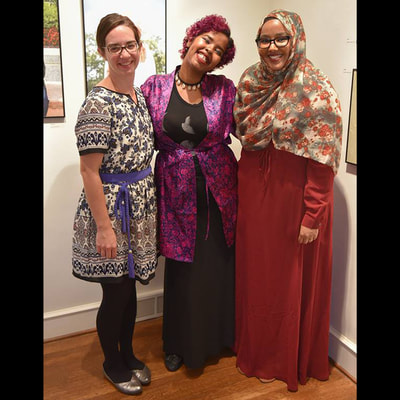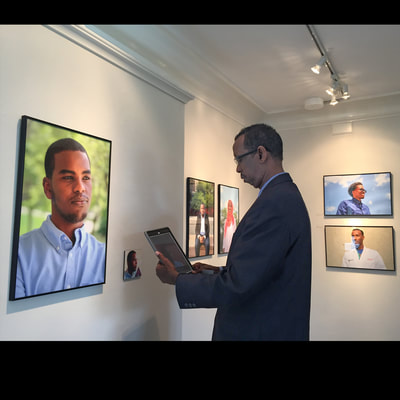;ljkh;lkj;lkj;
Speech: Somali Community Needs
From: Hassan Omar, President SCAO
To: Columbus City Council
Date: Feb 16, 2011
Good afternoon:
As many of you know a civil war has been ongoing in Somalia since 1991, leaving more than 8 million citizens displaced. Many of these Somalis have fled the country altogether coming to the United States. In particular Columbus has become the second most popular destination for Somalis, with a population estimating between 45 thousand and 65 thousand.
In 2000 the Somali Community Association of Ohio began providing assistance to hundreds of these new refugees and immigrants. Since 2000 the organization has helped more than 34,000 clients develop skills to sustain themselves and have a successful future in Columbus.
The Somali population has experienced much success in Columbus with many staring their own local businesses. Currently Somalis own four shopping centers with many Somali shops located inside. Somalis have achieved a lot in education as well, with many gaining access to ESOL education and obtaining upper level degrees from schools like Ohio State University and Columbus State Community College.
Amidst all of these successes seen within our community, the SCAO still observes many obstacles that exist in the Somali community particularly in the areas of housing, unemployment, and youth development.
Due to the large influx of Somalis in Columbus, we are witnessing a lack of affordable housing. Due to this many Somalis are living in very crowded conditions or have to live in unsafe areas. Currently most Somalis in Columbus live in neighborhoods with a high rate of crime and drug activity. This not only affects the safety of the residents, but also has a negative impact on the youth in these areas.
Due to their living environments many youth become negatively influenced and engaged with gang activity and substance abuse. In relation to the negative neighborhood activities, many youth are not only becoming involved in these detrimental habits, but are suffering in terms of education. The SCAO is witnessing a growing number of Somali youth drop out of school or have a very low level of academic achievement. This is not only to the negative influences in their neighborhoods, but also the lack of ESOL programs with teachers fluent in both English and Somali. This gap between the two languages causes students to become easily frustrated and discouraged.
As seen in many other communities, the Somali population has been hit hard with high unemployment rates. As of now it is estimated that the unemployment rate in the Somali community is at 40%. The lack of employment not only causes short-term effects such as a possible loss of housing, transportation, and other resources, but also keeps the Somali population as a whole in a lower-income economic bracket.
In conclusion the Somali population has experienced much growth in Columbus as well as success in both business and education, but still faces many challenges. The SCAO believes that with more resources and efforts from the community, Columbus can reduce and even resolve the housing, youth development, and unemployment challenges seen today, thus strengthening the Somali community and allowing it to reach its full potential.
Thank you.
From: Hassan Omar, President SCAO
To: Columbus City Council
Date: Feb 16, 2011
Good afternoon:
As many of you know a civil war has been ongoing in Somalia since 1991, leaving more than 8 million citizens displaced. Many of these Somalis have fled the country altogether coming to the United States. In particular Columbus has become the second most popular destination for Somalis, with a population estimating between 45 thousand and 65 thousand.
In 2000 the Somali Community Association of Ohio began providing assistance to hundreds of these new refugees and immigrants. Since 2000 the organization has helped more than 34,000 clients develop skills to sustain themselves and have a successful future in Columbus.
The Somali population has experienced much success in Columbus with many staring their own local businesses. Currently Somalis own four shopping centers with many Somali shops located inside. Somalis have achieved a lot in education as well, with many gaining access to ESOL education and obtaining upper level degrees from schools like Ohio State University and Columbus State Community College.
Amidst all of these successes seen within our community, the SCAO still observes many obstacles that exist in the Somali community particularly in the areas of housing, unemployment, and youth development.
Due to the large influx of Somalis in Columbus, we are witnessing a lack of affordable housing. Due to this many Somalis are living in very crowded conditions or have to live in unsafe areas. Currently most Somalis in Columbus live in neighborhoods with a high rate of crime and drug activity. This not only affects the safety of the residents, but also has a negative impact on the youth in these areas.
Due to their living environments many youth become negatively influenced and engaged with gang activity and substance abuse. In relation to the negative neighborhood activities, many youth are not only becoming involved in these detrimental habits, but are suffering in terms of education. The SCAO is witnessing a growing number of Somali youth drop out of school or have a very low level of academic achievement. This is not only to the negative influences in their neighborhoods, but also the lack of ESOL programs with teachers fluent in both English and Somali. This gap between the two languages causes students to become easily frustrated and discouraged.
As seen in many other communities, the Somali population has been hit hard with high unemployment rates. As of now it is estimated that the unemployment rate in the Somali community is at 40%. The lack of employment not only causes short-term effects such as a possible loss of housing, transportation, and other resources, but also keeps the Somali population as a whole in a lower-income economic bracket.
In conclusion the Somali population has experienced much growth in Columbus as well as success in both business and education, but still faces many challenges. The SCAO believes that with more resources and efforts from the community, Columbus can reduce and even resolve the housing, youth development, and unemployment challenges seen today, thus strengthening the Somali community and allowing it to reach its full potential.
Thank you.
Resources
Links from Hassan Omar:
http://radio.wosu.org/post/song-farmajo-columbus-somalis-see-hope-their-home-country
http://radio.wosu.org/post/north-columbus-mall-somali-women-run-show
https://www.facebook.com/OHFCSO/photos/a.173381716088287.39969.152983078128151/812090342217418/?type=1&theater
|
http://www.ssaohiostate.com/
http://bit.ly/2kk95Wu https://www.10tv.com/article/ginther-signs-executive-order-supporting-resettlement-refugees-columbus http://www.politico.com/magazine/story/2017/02/how-an-american-bureaucrat-became-president-of-somalia-214798 https://www.acf.hhs.gov/orrhttp://www.crisohio.org/ http://jfs.ohio.gov/refugee/index.stm http://www.crisohio.org/staff-directory/ https://https://www.rescue.org/video/why-are-refugees-good-economy https://www.rescue.org/article/seven-common-myths-about-refugee-resettlement-united-states www.rescue.org/frequently-asked-questions-about-refugees-and-resettlement https://www.rescue.org/country/somalia https://www.crowdrise.com/internationalrescuecommittee https://www.crowdrise.com/charities/choose http://www.pewresearch.org/fact-tank/2016/06/01/5-facts-about-the-global-somali-diaspora/ http://www.forcedmigration.org/research-resources/expert-guides/somalia/alldocuments https://www.brookings.edu/blog/order-from-chaos/2017/02/23/whats-next-for-somalia/ https://www.brookings.edu/research/internal-displacement-in-somalia/ Somali American success stories Ilhar Omar, Minnesota House Rep elected Dec 2016 / https://www.ilhanomar.com Mentoring stories Story: https://www.rescue.org/announcement/somali-family-overcome-their-fears-and-find-comfort-their-new-community Descriptions and videos of refugee stories: https://www.rescue.org/article/what-refugees-have-say-president This story is here: https://www.rescue.org/article/american-friend-becomes-family-somali-refugee-building-new-life-her-son |
https://obamawhitehouse.archives.gov/blog/2015/11/20/infographic-screening-process-refugee-entry-united-states
|
http://jfs.ohio.gov/refugee/index.stm
Welcome to Ohio Refugee Services
The Ohio Refugee Services Program operates as part of a national and international effort to help people displaced from their countries to find a new home and a new life. Individuals and families may be displaced by war; political, religious, or economic turmoil; and other factors beyond their control. The Ohio Department of Job and Family Services (ODJFS) supervises a program of services and benefits designed to help refugees, asylees, Cuban/Haitian entrants, and selected others resettle in Ohio. ODJFS is supported in this effort by the federal Office of Refugee Resettlement, county departments of job and family services, resettlement agencies, and medical providers. The Refugee Services Section is the ODJFS unit responsible for coordination and administration of refugee services in Ohio.
Populations Served
Refugees are people who are unable or unwilling to return to their country of nationality because of persecution or a well-founded fear of persecution on account of race, religion, nationality, membership in a particular social group, or political opinion. Many refugees have lived under harsh conditions for extended periods in camps outside their native borders before being accepted by a host country for permanent resettlement. Refugees entering the U.S. have been given permission to do so by the federal Department of Homeland Security.
Asylees are individuals who arrive in the U.S. on their own and then ask for asylum (official refuge or protection) because of their refugee-like circumstances. They are eligible for refugee services once asylum is granted by the U.S. Citizenship and Immigration Services.
Cuban and Haitian entrants are nationals of those countries residing in the U.S. who have been granted special status similar to refugees.
The Ohio Refugee Services Program also serves victims of trafficking, persons who have been subjected to force, fraud, or coercion for the purpose of sexual exploitation or forced labor, as well as certain Amerasians from Vietnam.
Secondary migrants are people who fall into any of the categories listed above and who move to Ohio from their original place of U.S. resettlement.
Services and Benefits
The goal of the Refugee Services Program is to help refugees and others granted refugee status achieve economic self-sufficiency and social adjustment within the shortest time possible following their arrival in the U.S. Refugees are eligible for the following assistance:
Refugee Cash Assistance: Ohio operates a publicly administered cash assistance program for refugees modeled after the federal Temporary Assistance for Needy Families (TANF) program, known in Ohio as Ohio Works First (OWF). Refugees not eligible for TANF/OWF can receive refugee cash assistance for their first 8 months in the U.S.
Refugee Medical Assistance: If not eligible for Medicaid, refugees are eligible for refugee medical assistance for the first eight months after arriving in the U.S. They will receive a monthly card that provides the same medical coverage as provided by the Medicaid program. After refugee medical assistance is no longer available, refugees may be eligible for health care coverage under Medicaid.
As soon as possible after arrival in Ohio, refugees receive a comprehensive health screening as a follow-up to the exam they received overseas. The purpose of the screening is to identify for treatment any communicable disease that may threaten public health and other medical conditions that may act as barriers to successful resettlement. ODJFS contracts with healthcare providers in resettlement counties to perform these screenings and make appropriate referrals for follow-up care.
Refugee Social Services: For five years after arrival, refugees are eligible for the following services:
Refugees can apply for medical assistance, cash assistance, and food stamps at their county department of job and family services.
Funding
All refugee services provided through the Ohio Department of Job and Family Services are 100% federally funded through the Office of Refugee Resettlement.
The information presented here is an overview. For details on the Ohio Refugee Services Program, please refer to Ohio Administrative Code Refugee Program Rules, and the Ohio Refugee State Plan.
Welcome to Ohio Refugee Services
The Ohio Refugee Services Program operates as part of a national and international effort to help people displaced from their countries to find a new home and a new life. Individuals and families may be displaced by war; political, religious, or economic turmoil; and other factors beyond their control. The Ohio Department of Job and Family Services (ODJFS) supervises a program of services and benefits designed to help refugees, asylees, Cuban/Haitian entrants, and selected others resettle in Ohio. ODJFS is supported in this effort by the federal Office of Refugee Resettlement, county departments of job and family services, resettlement agencies, and medical providers. The Refugee Services Section is the ODJFS unit responsible for coordination and administration of refugee services in Ohio.
Populations Served
Refugees are people who are unable or unwilling to return to their country of nationality because of persecution or a well-founded fear of persecution on account of race, religion, nationality, membership in a particular social group, or political opinion. Many refugees have lived under harsh conditions for extended periods in camps outside their native borders before being accepted by a host country for permanent resettlement. Refugees entering the U.S. have been given permission to do so by the federal Department of Homeland Security.
Asylees are individuals who arrive in the U.S. on their own and then ask for asylum (official refuge or protection) because of their refugee-like circumstances. They are eligible for refugee services once asylum is granted by the U.S. Citizenship and Immigration Services.
Cuban and Haitian entrants are nationals of those countries residing in the U.S. who have been granted special status similar to refugees.
The Ohio Refugee Services Program also serves victims of trafficking, persons who have been subjected to force, fraud, or coercion for the purpose of sexual exploitation or forced labor, as well as certain Amerasians from Vietnam.
Secondary migrants are people who fall into any of the categories listed above and who move to Ohio from their original place of U.S. resettlement.
Services and Benefits
The goal of the Refugee Services Program is to help refugees and others granted refugee status achieve economic self-sufficiency and social adjustment within the shortest time possible following their arrival in the U.S. Refugees are eligible for the following assistance:
Refugee Cash Assistance: Ohio operates a publicly administered cash assistance program for refugees modeled after the federal Temporary Assistance for Needy Families (TANF) program, known in Ohio as Ohio Works First (OWF). Refugees not eligible for TANF/OWF can receive refugee cash assistance for their first 8 months in the U.S.
Refugee Medical Assistance: If not eligible for Medicaid, refugees are eligible for refugee medical assistance for the first eight months after arriving in the U.S. They will receive a monthly card that provides the same medical coverage as provided by the Medicaid program. After refugee medical assistance is no longer available, refugees may be eligible for health care coverage under Medicaid.
As soon as possible after arrival in Ohio, refugees receive a comprehensive health screening as a follow-up to the exam they received overseas. The purpose of the screening is to identify for treatment any communicable disease that may threaten public health and other medical conditions that may act as barriers to successful resettlement. ODJFS contracts with healthcare providers in resettlement counties to perform these screenings and make appropriate referrals for follow-up care.
Refugee Social Services: For five years after arrival, refugees are eligible for the following services:
- acculturation
- English language training
- employment training
- job placement
- transportation
- child care
- citizenship classes
- translation & interpreter services
- referral services
- citizenship & naturalization services
Refugees can apply for medical assistance, cash assistance, and food stamps at their county department of job and family services.
Funding
All refugee services provided through the Ohio Department of Job and Family Services are 100% federally funded through the Office of Refugee Resettlement.
The information presented here is an overview. For details on the Ohio Refugee Services Program, please refer to Ohio Administrative Code Refugee Program Rules, and the Ohio Refugee State Plan.


